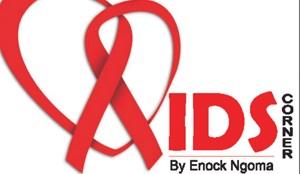 As some of you might be aware,the International AIDS Conference takes place in Durban, South Africa from July 18, 2016 to July 22, 2016. I thought I should share some of the highlights of that conference which I received via a statement from the organisers:
As some of you might be aware,the International AIDS Conference takes place in Durban, South Africa from July 18, 2016 to July 22, 2016. I thought I should share some of the highlights of that conference which I received via a statement from the organisers:
HIV Vaccine & Functional Cure: Continuing Momentum
Cutting-edge research on gene-editing to help eradicate HIV
Novel discoveries on latently infected HIV cells, including how frequently cells are reactivated and how long they survive New approaches to reduce the HIV viral reservoir and restore CD8+ T-cell function
Findings from Prevention Interventions and Trials
State of the HIV epidemic among women, including a 15-year trend analysis of the HIV gender gap between adolescent girls and boys in sub-Saharan Africa, as well as insights into HIV vulnerability of young women in inter-generational relationships
Qualitative analyses of landmark HIV prevention trials for women shedding new light on adherence
Insights on men who have sex with men (MSM) prevention issues, including new data on risk associated to online sex-seeking behaviours as well as mental health issues for MSM
Cost-effectiveness of harm reduction interventions for people who inject drugs, as well as innovative approaches to increase their adherence to HIV treatment Implementation and Progress
Analysis of countries’ capacities to report diagnosis, treatment and viral suppression data, and implications for tracking global progress towards achieving the 90-90-90 treatment goals
Progress and challenges in scaling up viral load testing in resource-limited settings
Optimal treatment strategies from high-burden regions, with lessons learned in reaching targets across the continuum of care
Analysis of year-to-year and long-term trends in HIV research funding, and implications for future funding needs
PrEP: Fulfilling its Current & Future Potential
Innovative methods to increase PrEP uptake in clinics, through community-based service delivery and at home
Latest information on next generation PrEP options, including long-acting injectables
New data to guide PrEP implementation, including cost-effectiveness analyses across low-, middle- and high-income countries
Key insights from several PrEP open-label extension and demonstration studies
HIV Co-infections & Co-morbidities: Overcoming Remaining Challenges
Advances in viral hepatitis and HIV co-infection treatment
Innovative strategies to reduce HIV and tuberculosis (TB) co-infection, including prevention of TB drug resistance
New data on the impact of co-morbidities – such as cancers, and cardiovascular, renal, and bone diseases
Well, all these topics sound good though these are the same issues that are discussed over and over again. It is my sincere hope that something new will come out of these topics especially on thorny ones such as PrEP.
On April 27, 2016, I received the following statement from the American Embassy in Lusaka:
The United States and Zambian Governments joined the Social Workers’ Association of Zambia (SWAZ) and other stakeholders for the Zambia Professional Social Work Symposium on the Role of Social Work in Ending the AIDS Epidemic.
Social work and clinical practitioners, government partners, social work students, and academia explored the social welfare workforce’s role in patient care and management and how it will be essential toward achieving Zambia’s Vision 2030 of a “nation free of HIV and AIDS.”
In line with this vision, the conference centered on the UNAIDS 90-90-90 initiative—a strategy that states if 90 percent all people living with HIV know their HIV status, 90 percent of all people diagnosed with HIV infection receive sustained antiretroviral therapy, and 90 percent of all people receiving antiretroviral therapy achieve viral suppression, the AIDS epidemic will end by 2020.
“The social work profession is strategically positioned through its case management model to contribute to the implementation of the UNAIDS 90-90-90 strategy, particularly at the community-level where personalized care is provided to children and their families,” noted Renee DeMarco, USAID’s Senior Care and Support Advisor. “We encourage all practitioners and students of social work to champion their profession and role in controlling the HIV epidemic in Zambia.”
The symposium offered a platform to share experiences, reinforce collaboration with clinical counterparts to enhance coordinated care, and focus on areas that build the entire profession’s capacity.
Currently, social welfare services are mainly delivered by a few trained professionals and community-based volunteers, who help to identify the needs for vulnerable children and their families, especially those affected with HIV.
To help this network reach a global standard of care, the symposium highlighted the on-going effort toward legislation, which will allow for accreditation, certification, and licensure for social workers in Zambia.
The Social Workers’ Association of Zambia receives technical support through the Zambia Rising activity, which is led by Save the Children and funded by the United States Agency for International Development (USAID) through the US President’s Emergency Plan for AIDS Relief (PEPFAR).
Between 2010 and 2019, the United States plans to invest $166 million to support service provision and quality care to vulnerable children. Social workers are vital to maximising this investment.
Thanks to the Embassy for this wonderful partnership.
For comments write to knoxngoma@gmail.com or call/text 0955883143
Quick Reply, To: Enock Ngoma <knoxngoma@gmail.com






